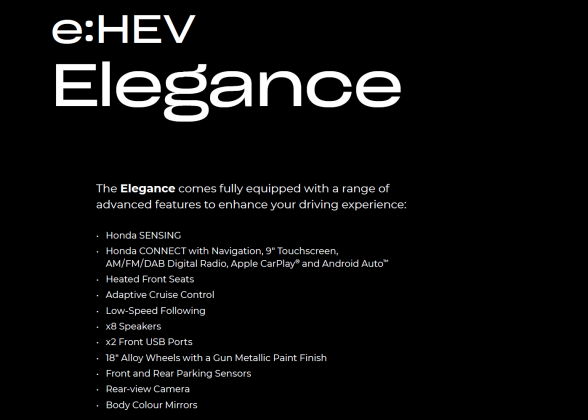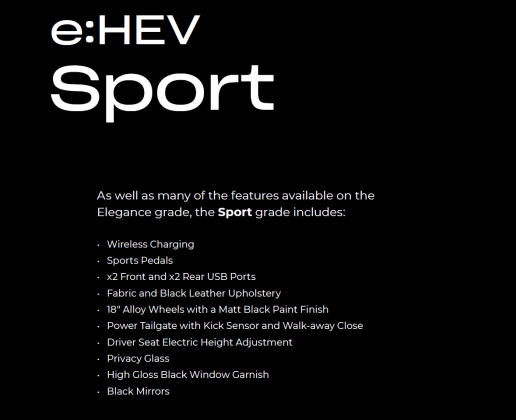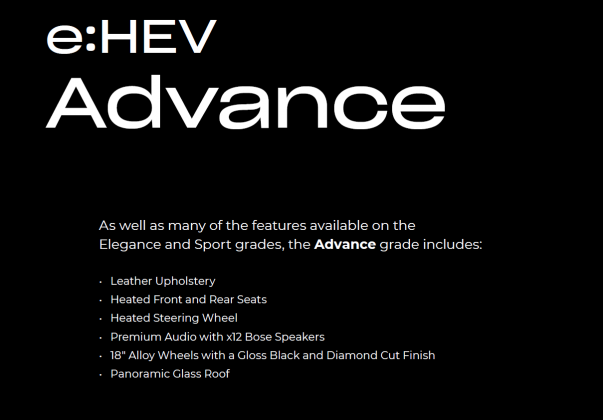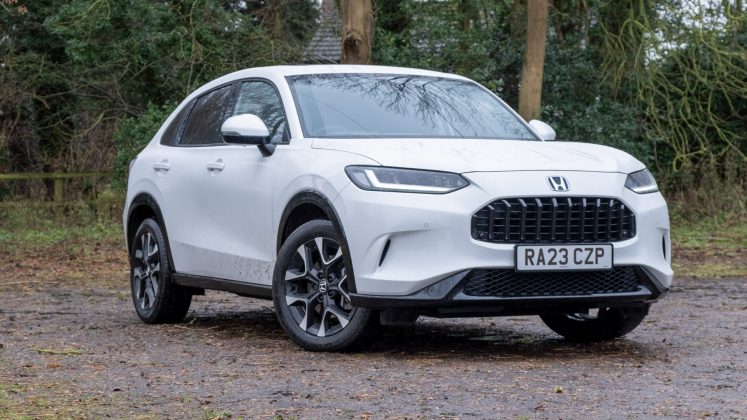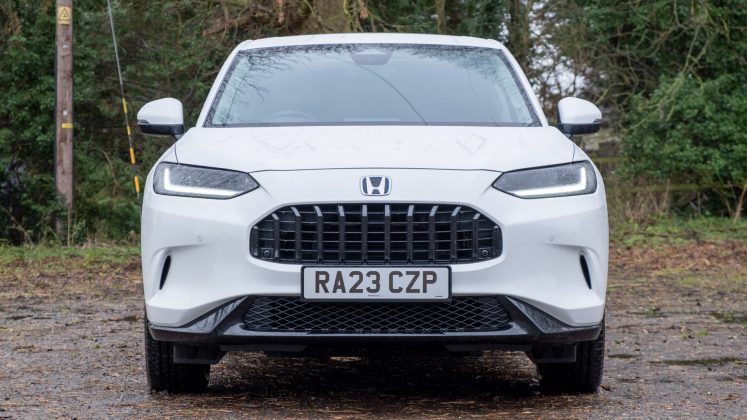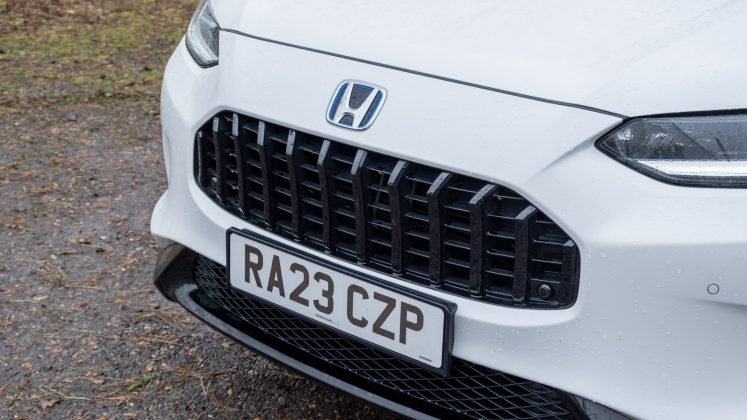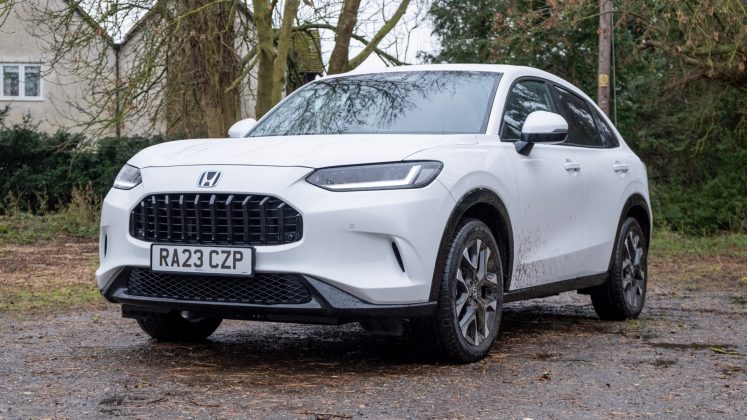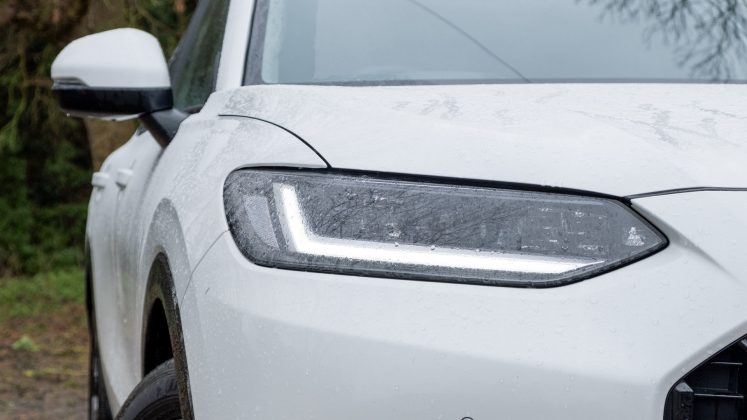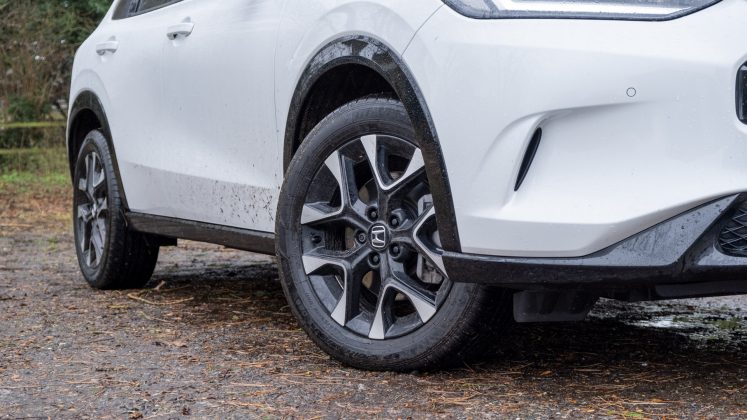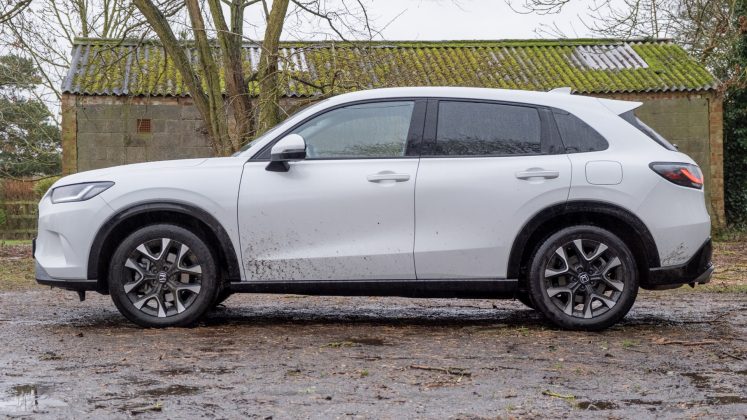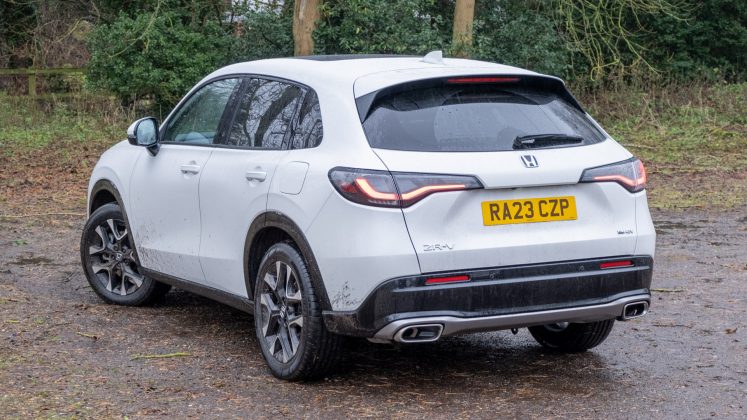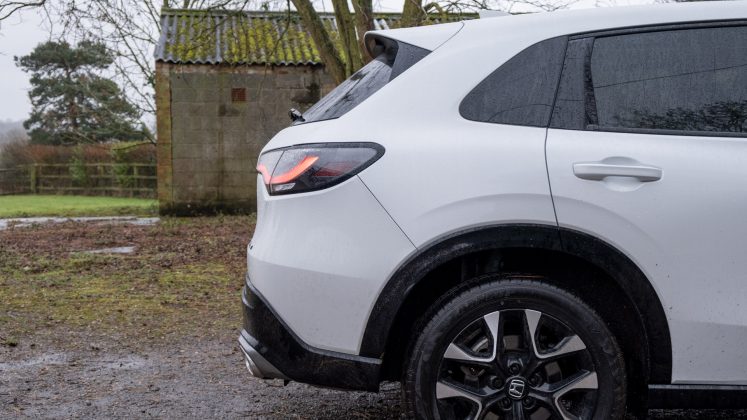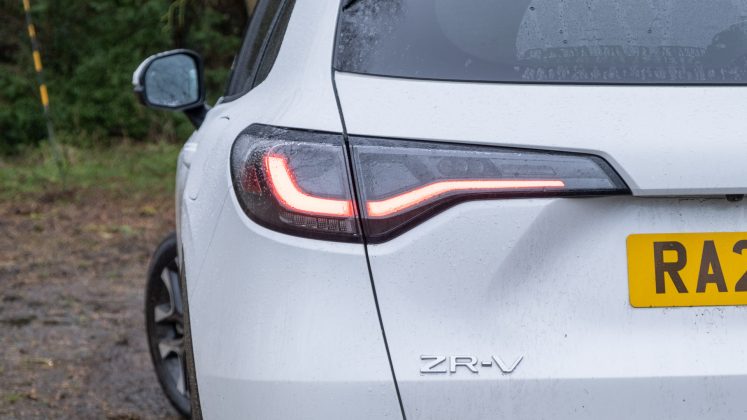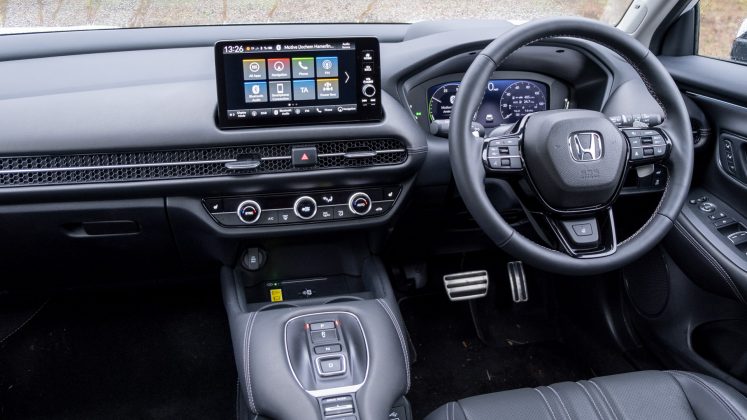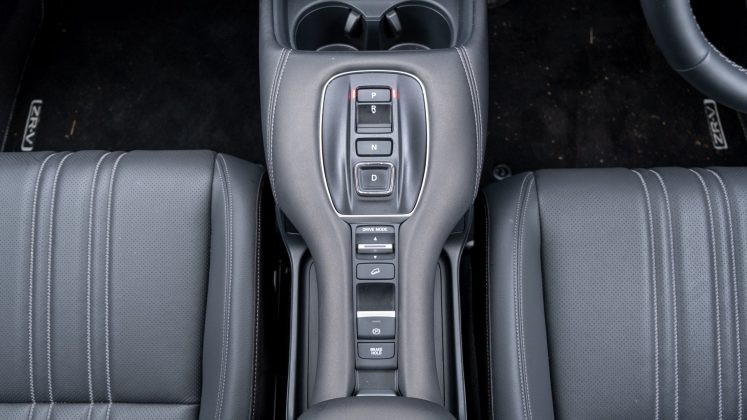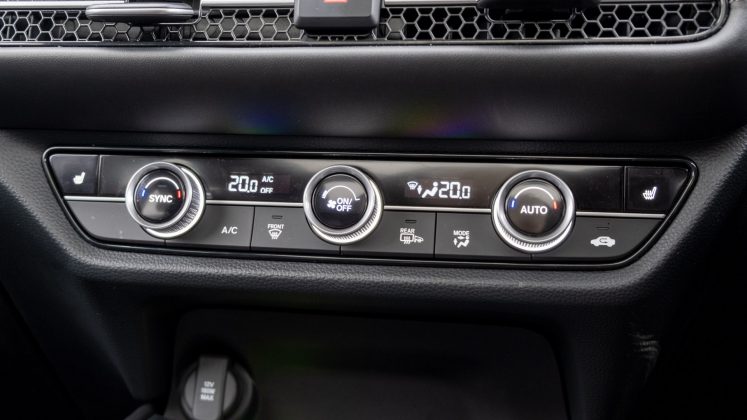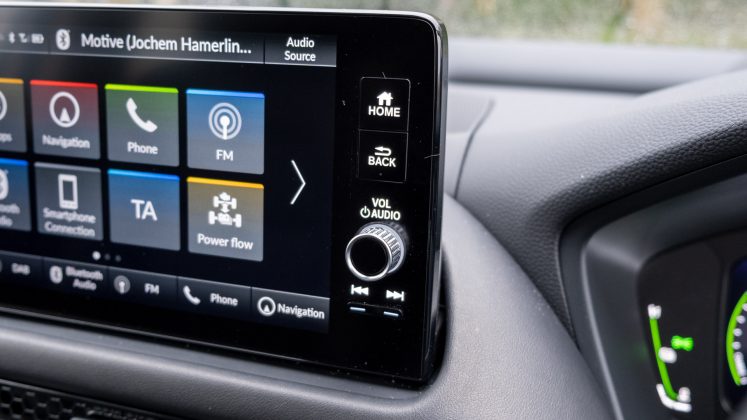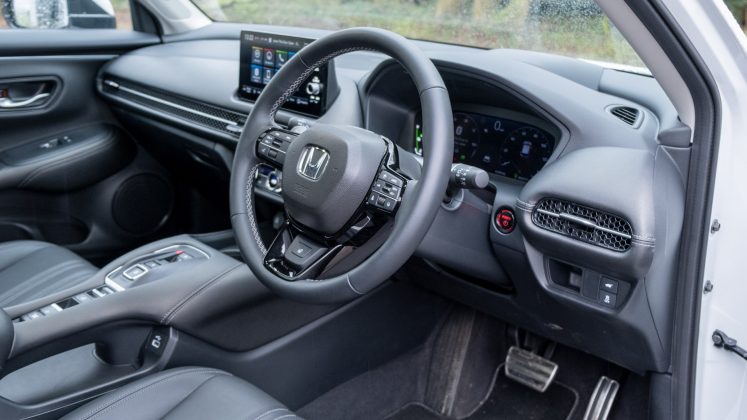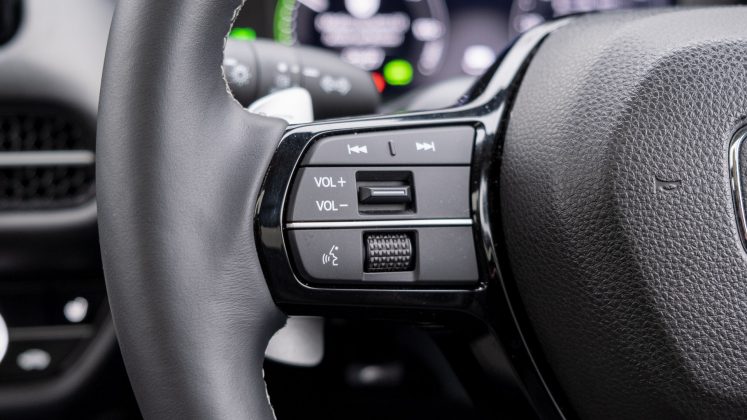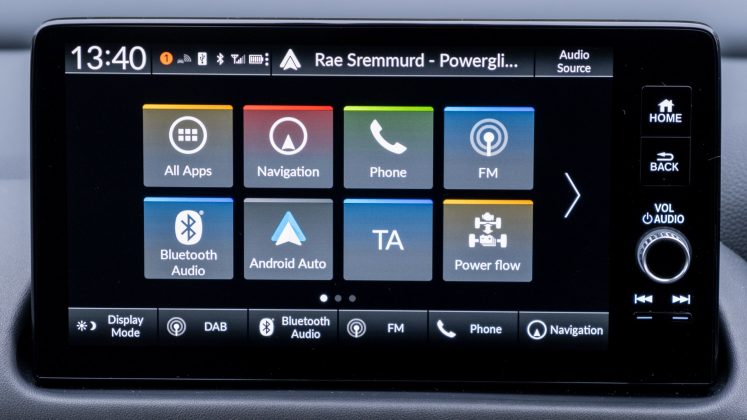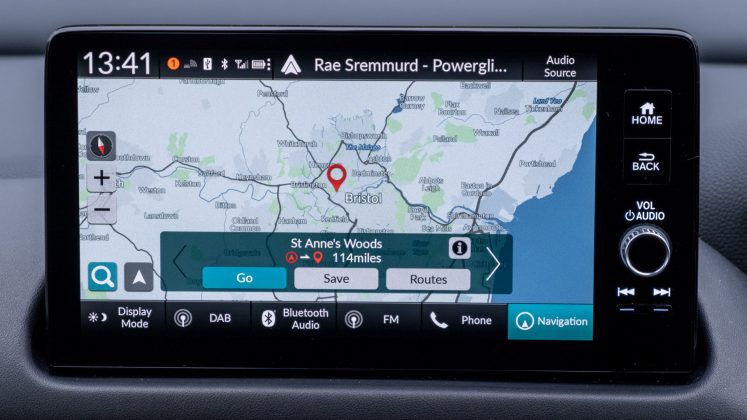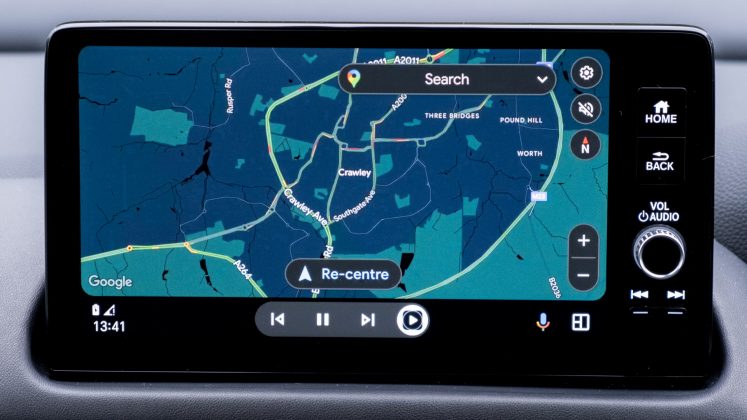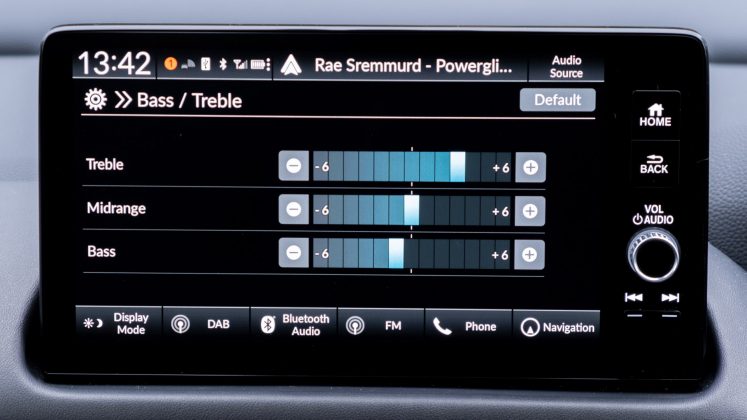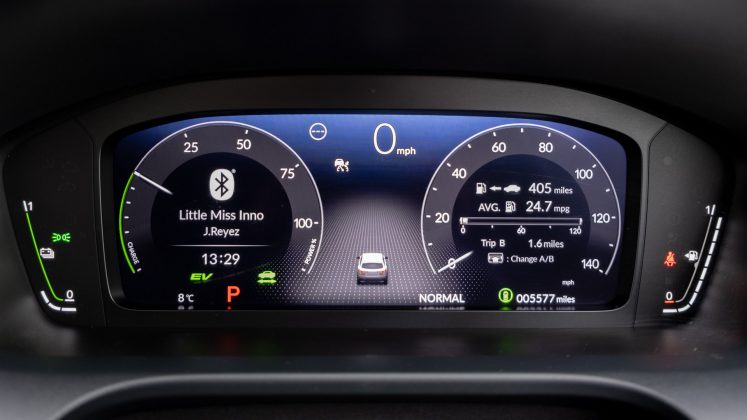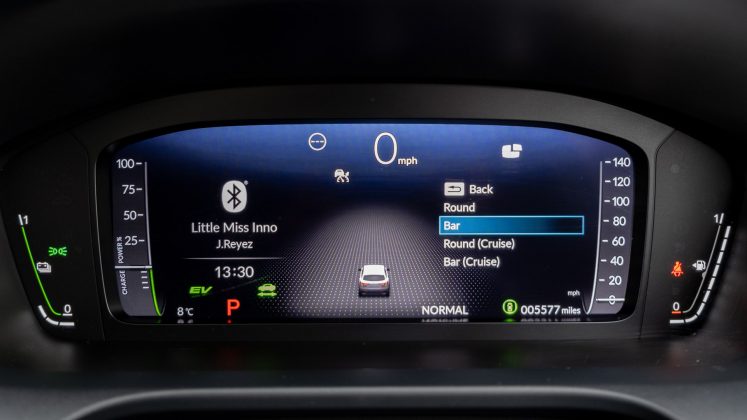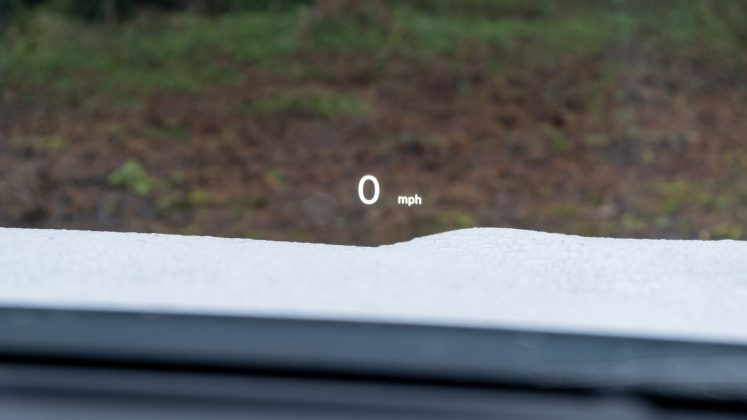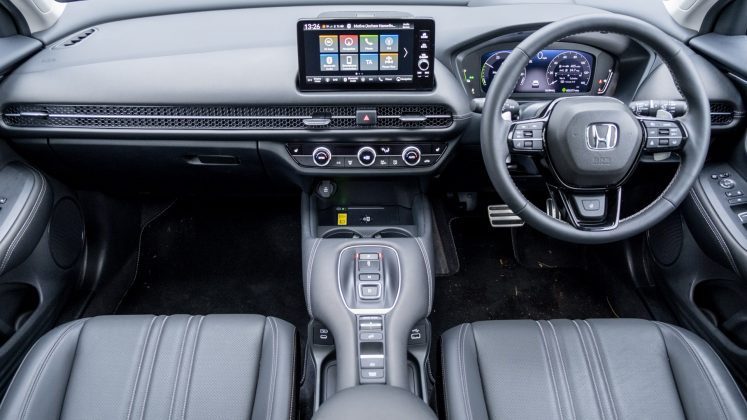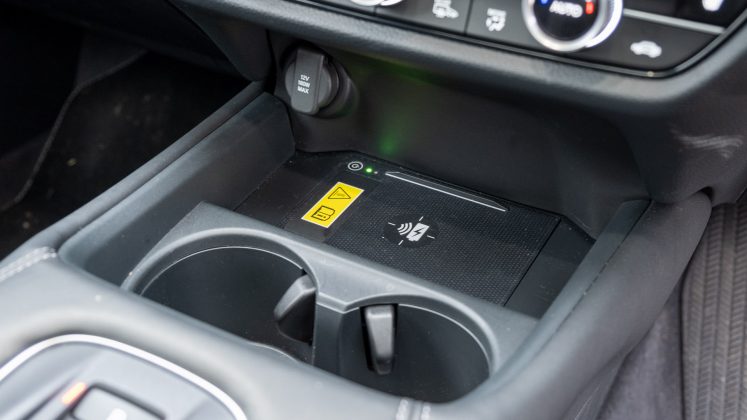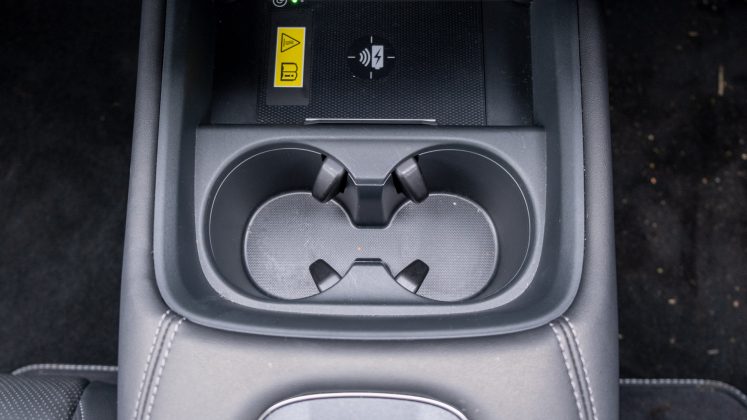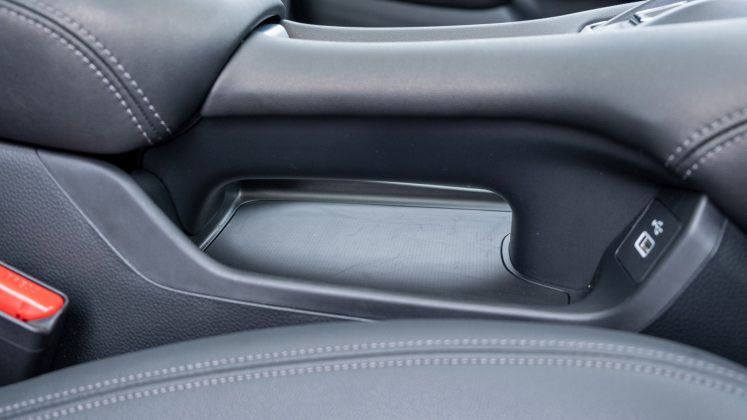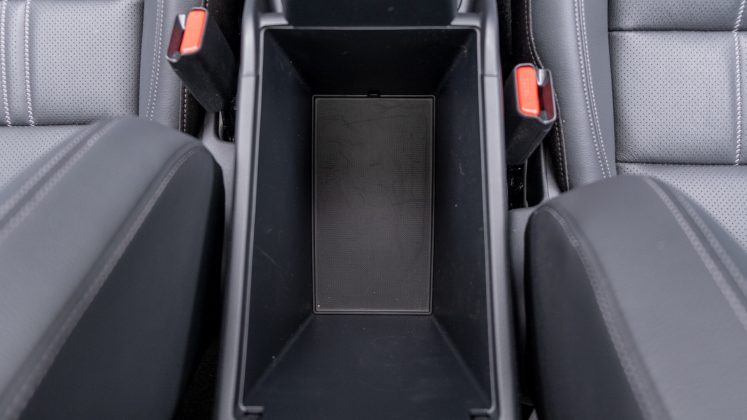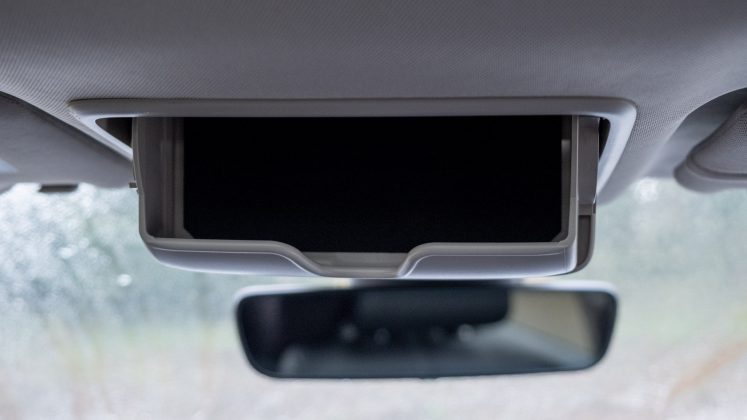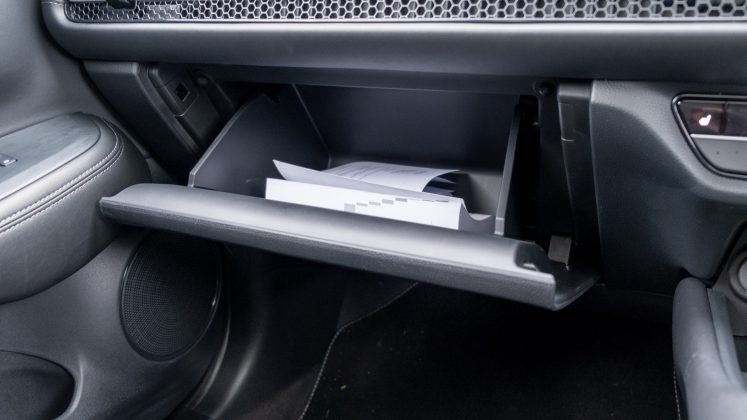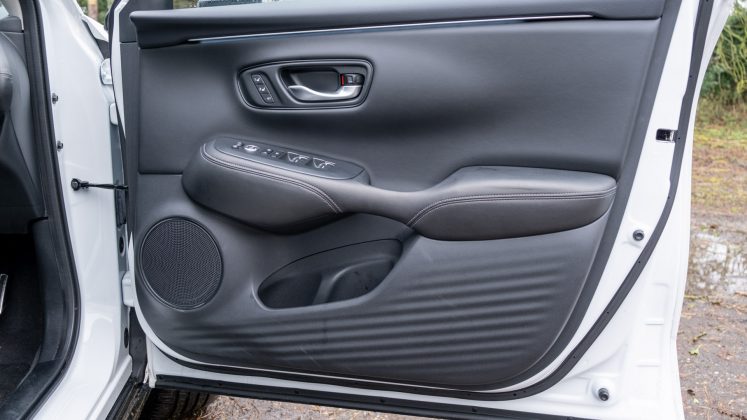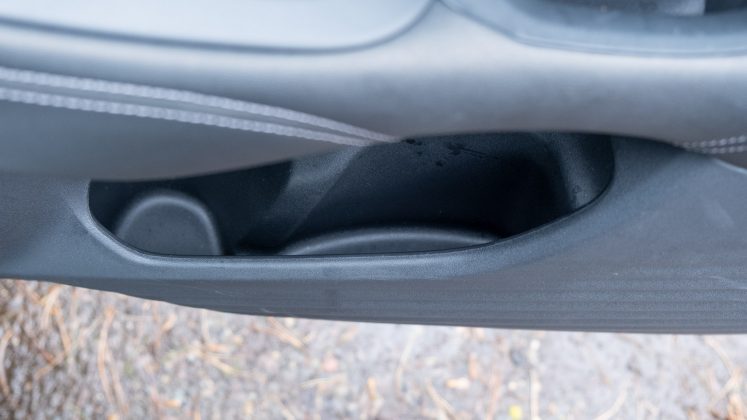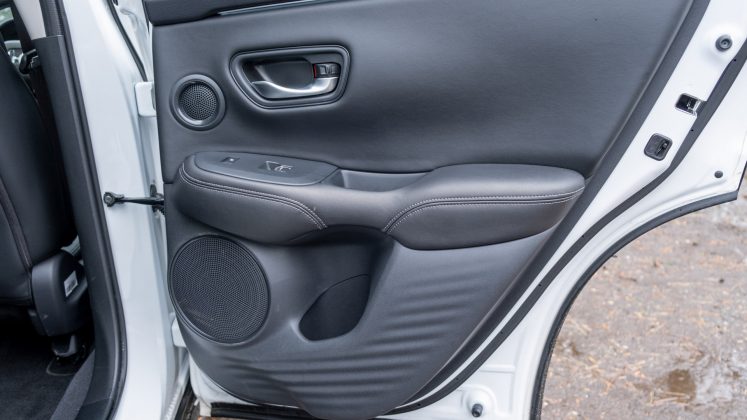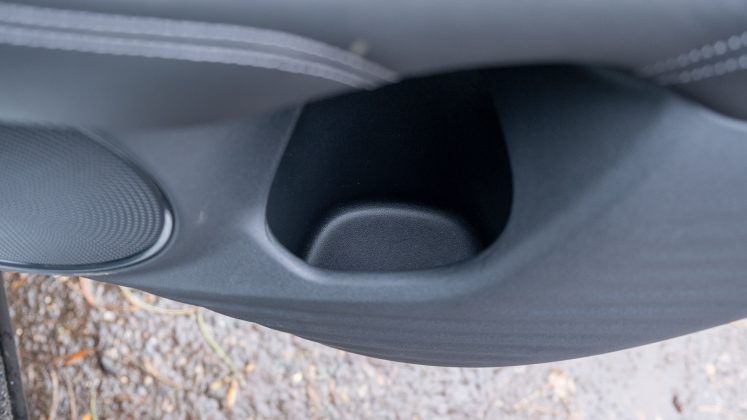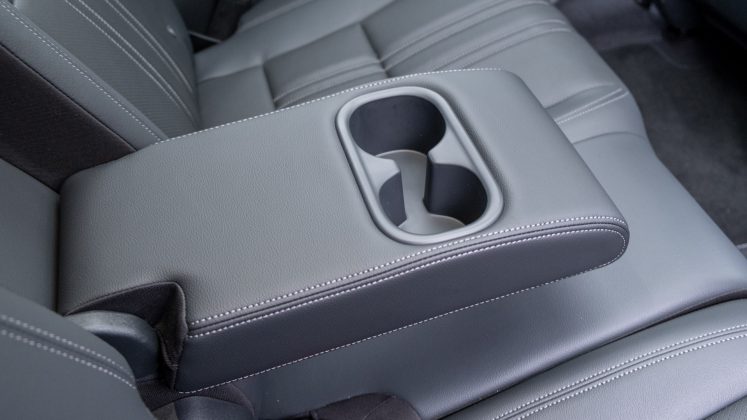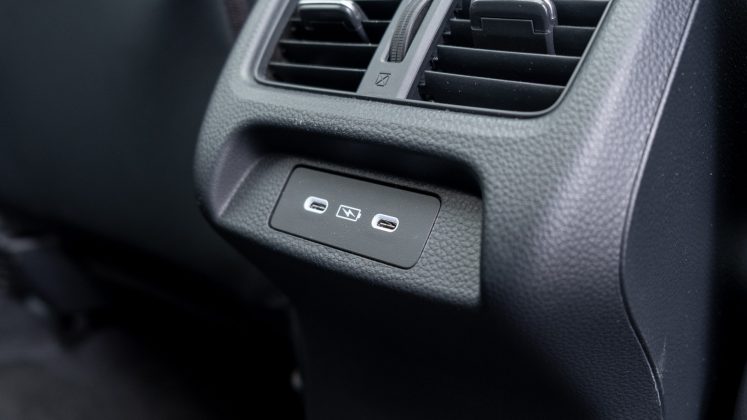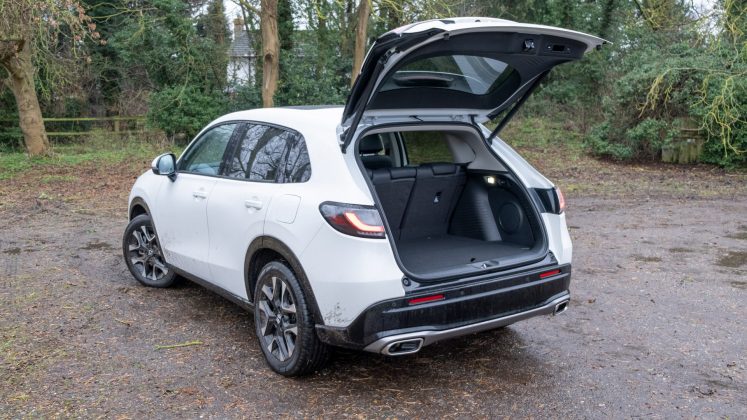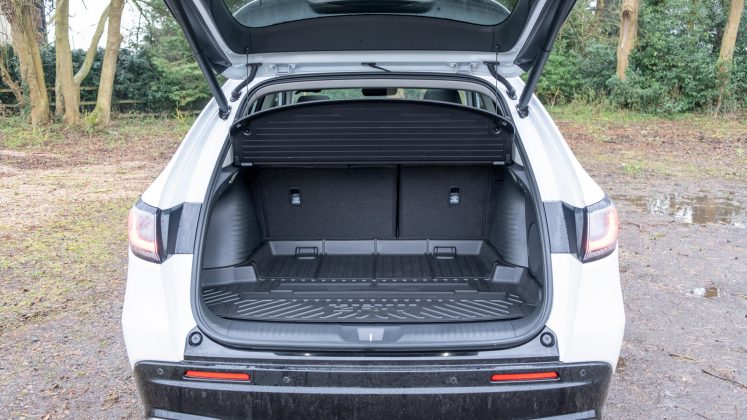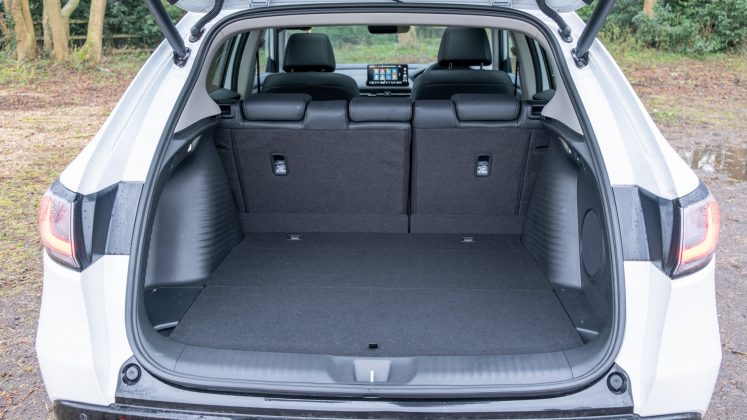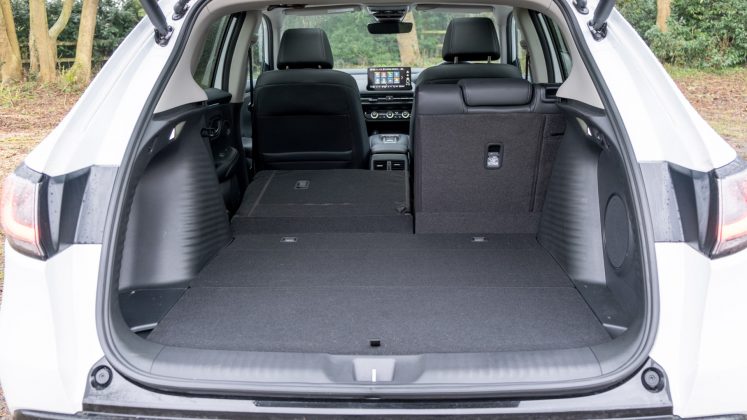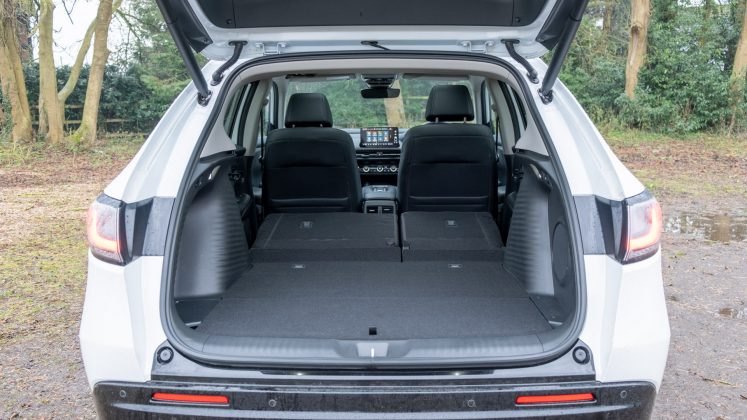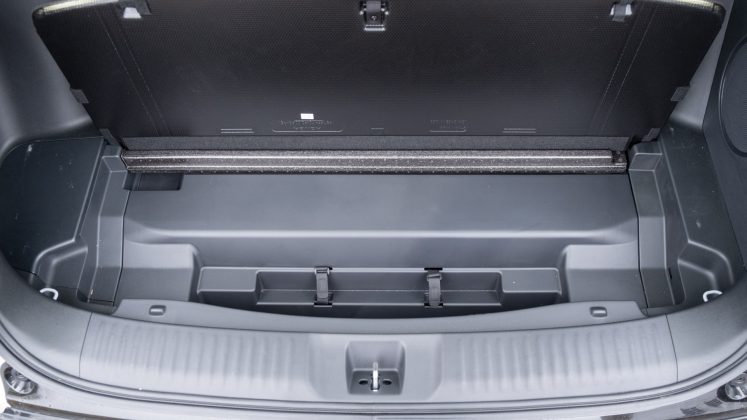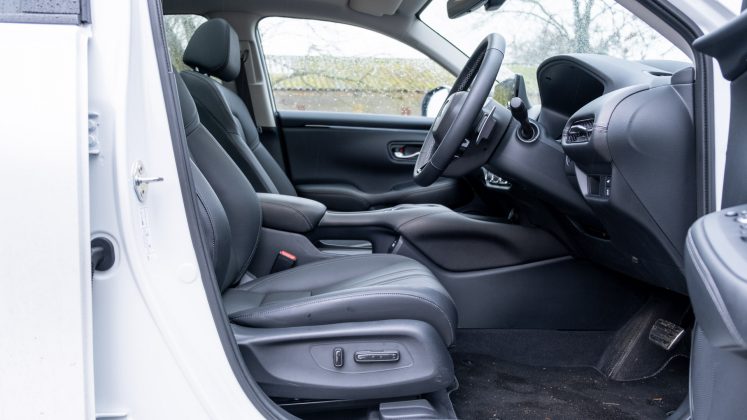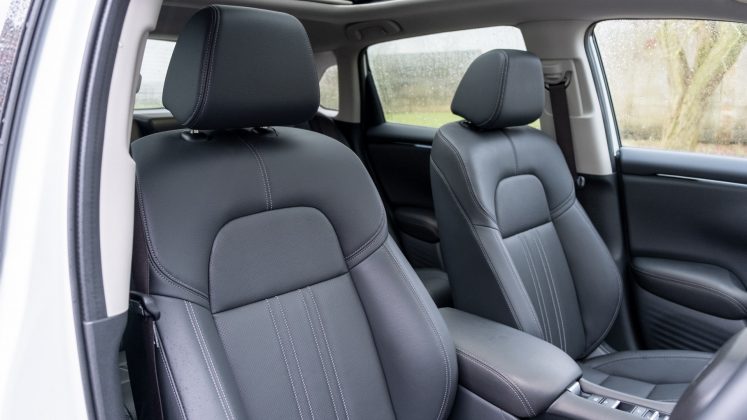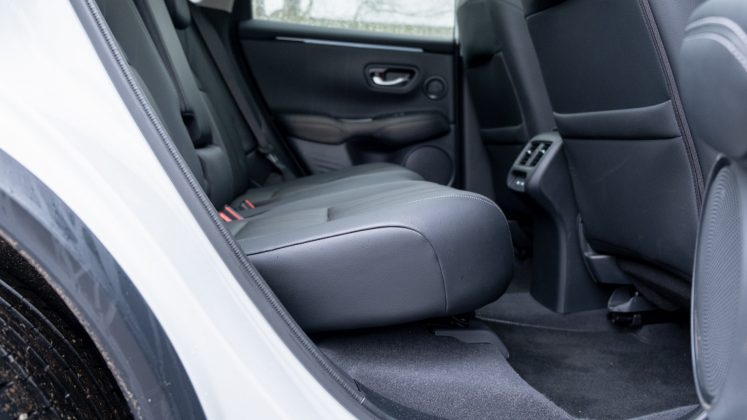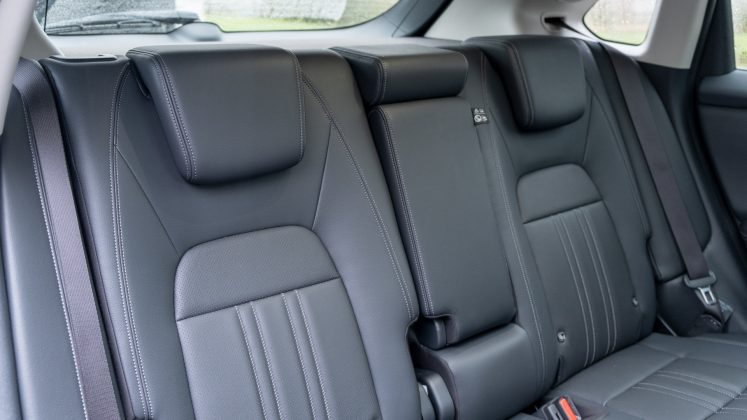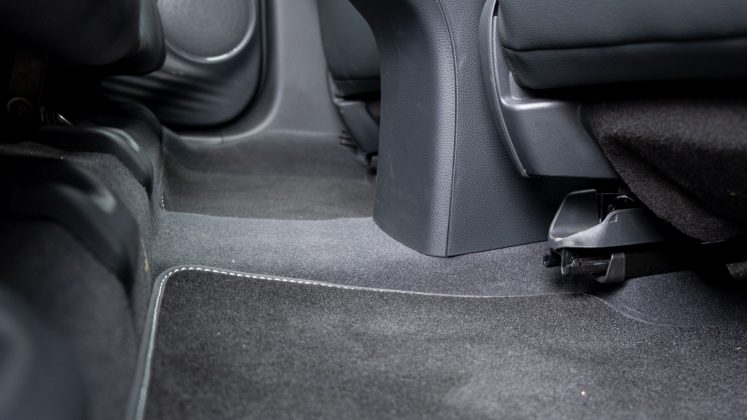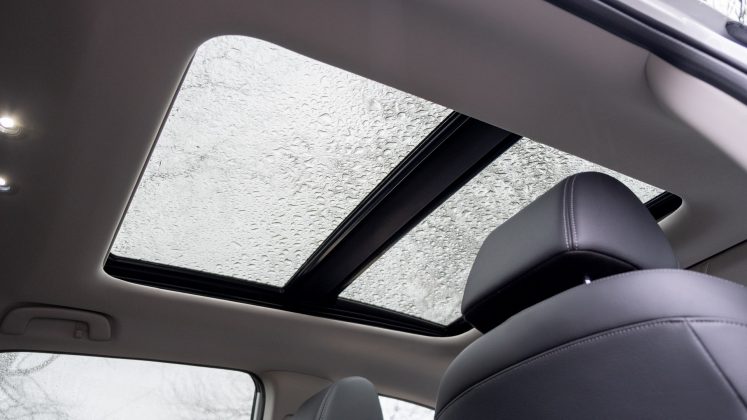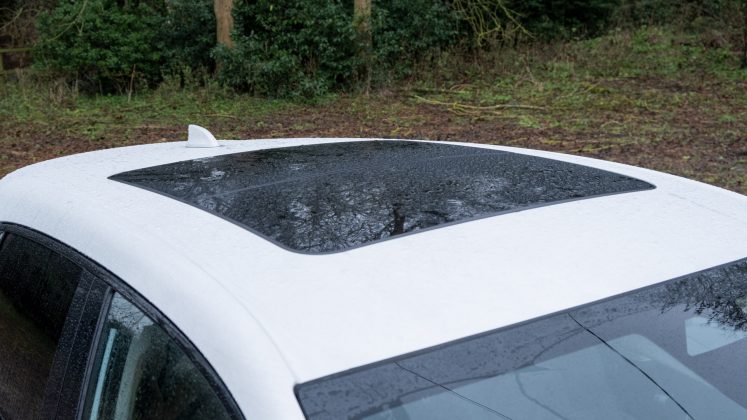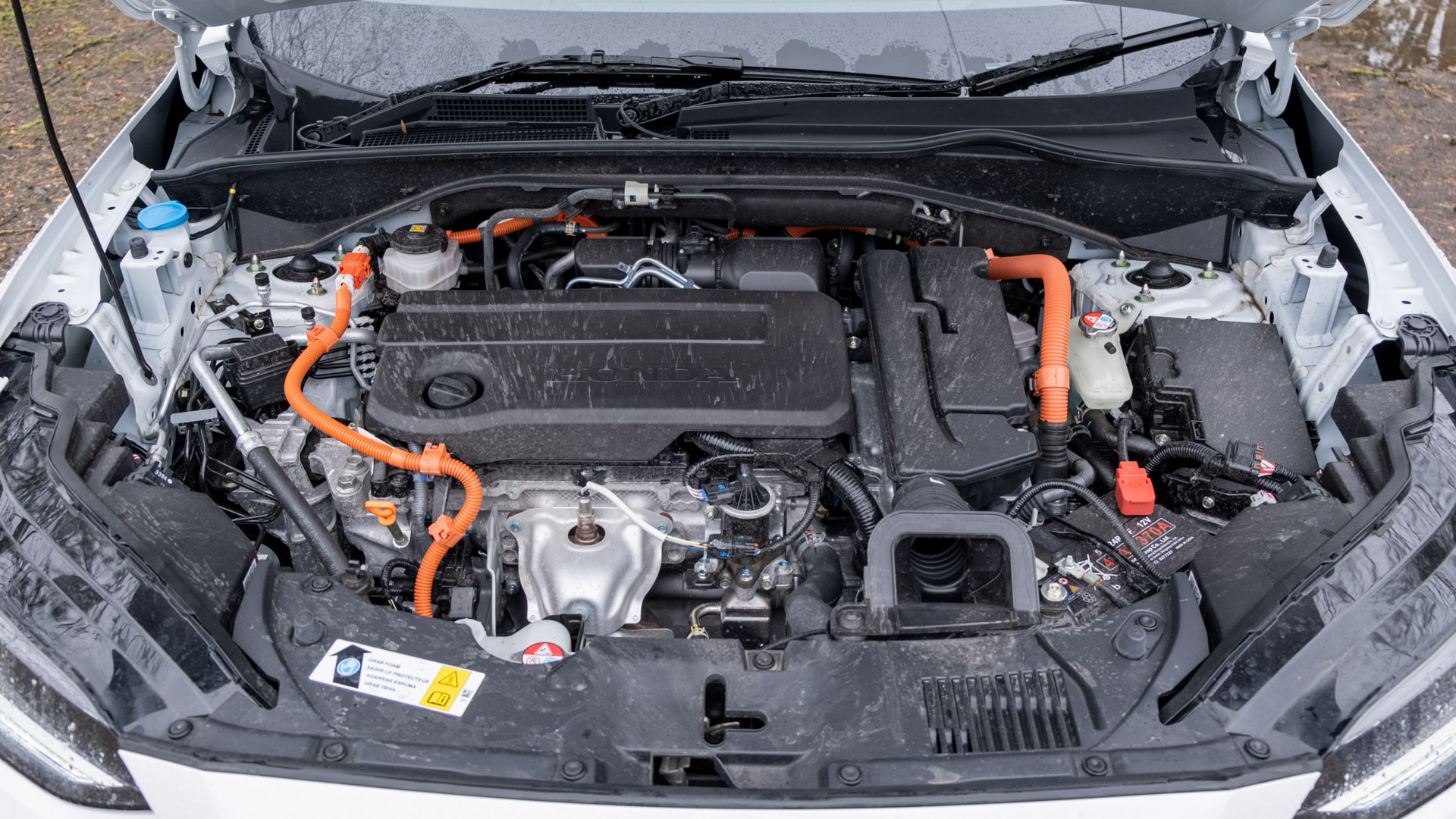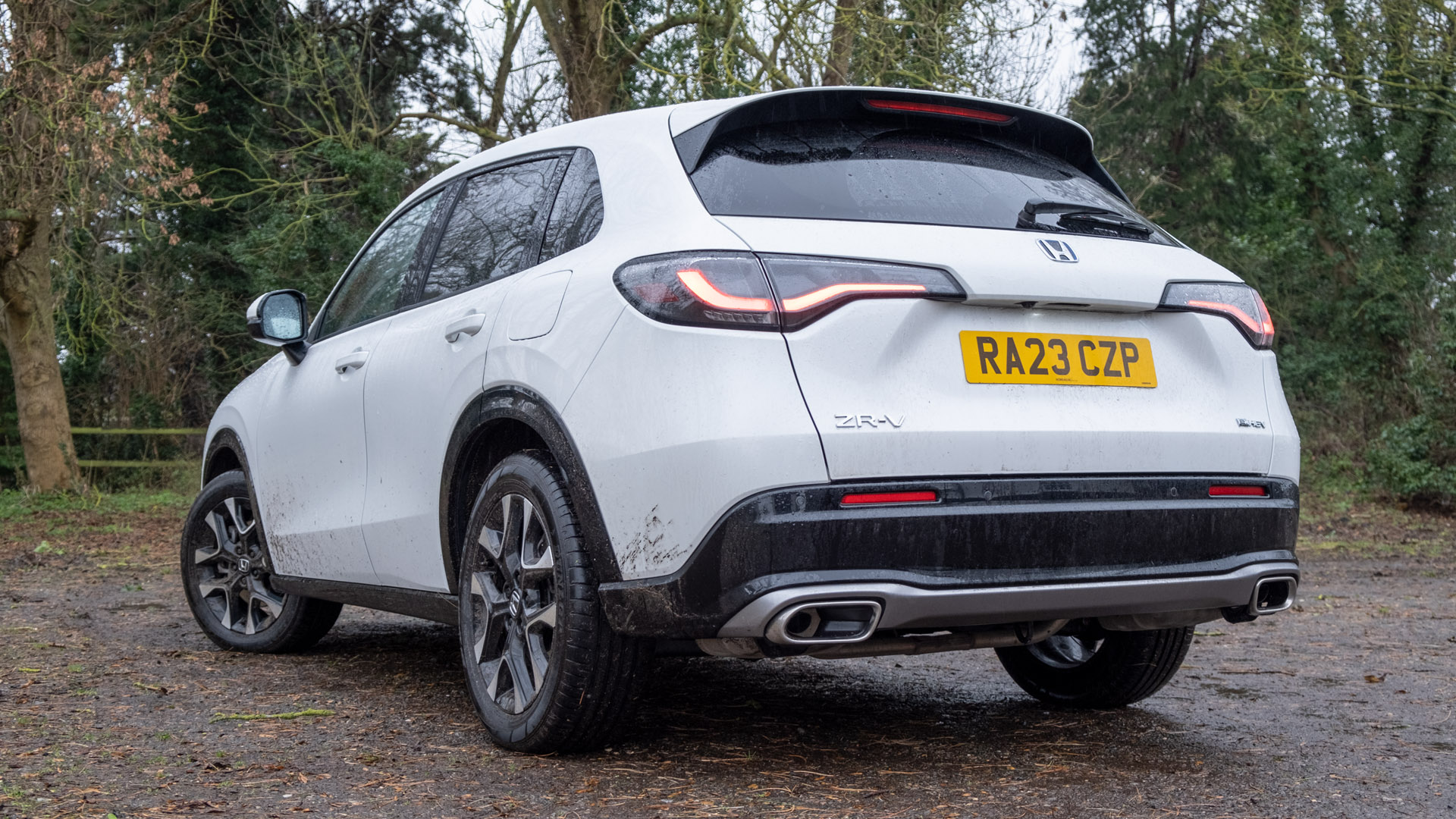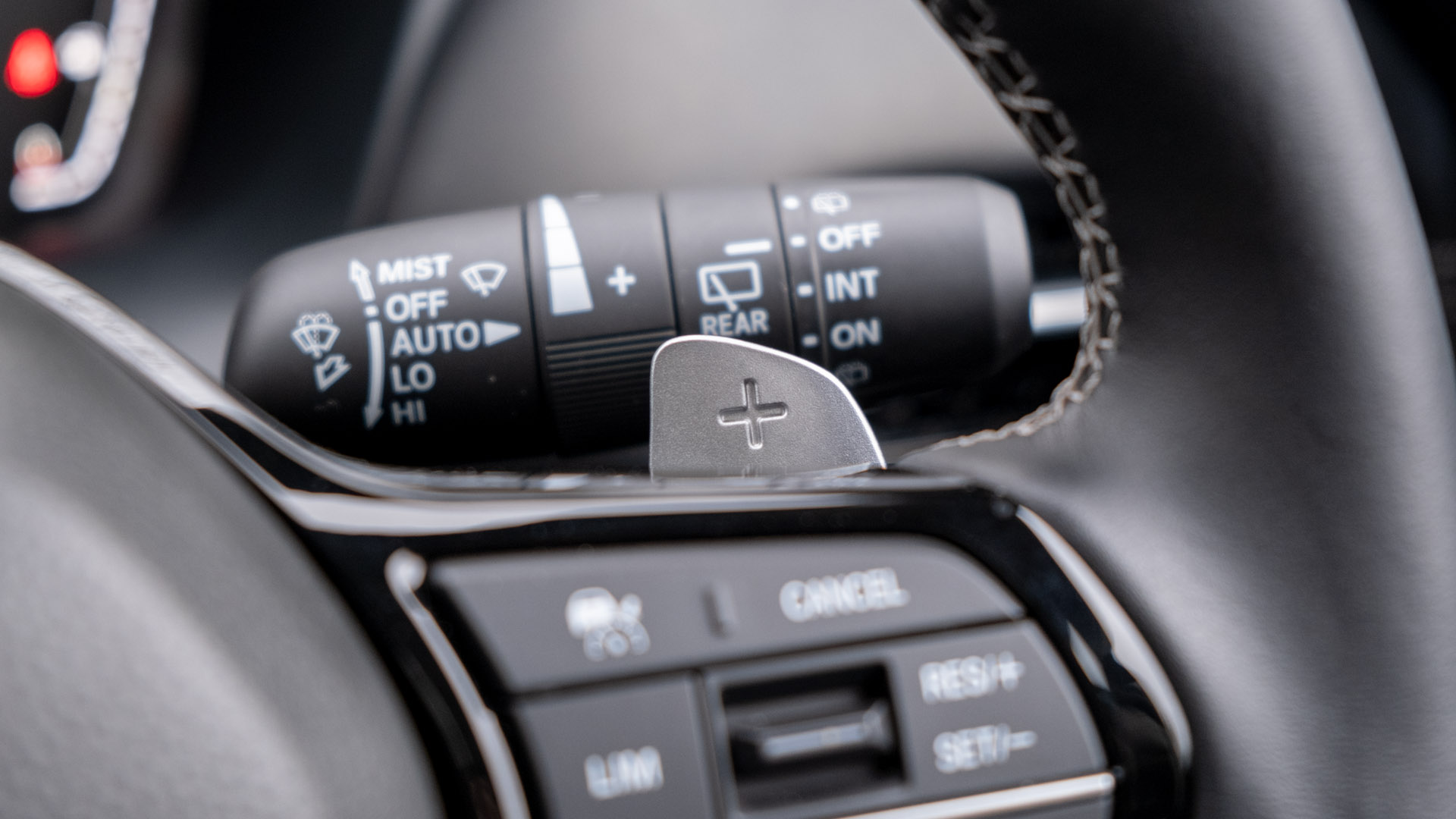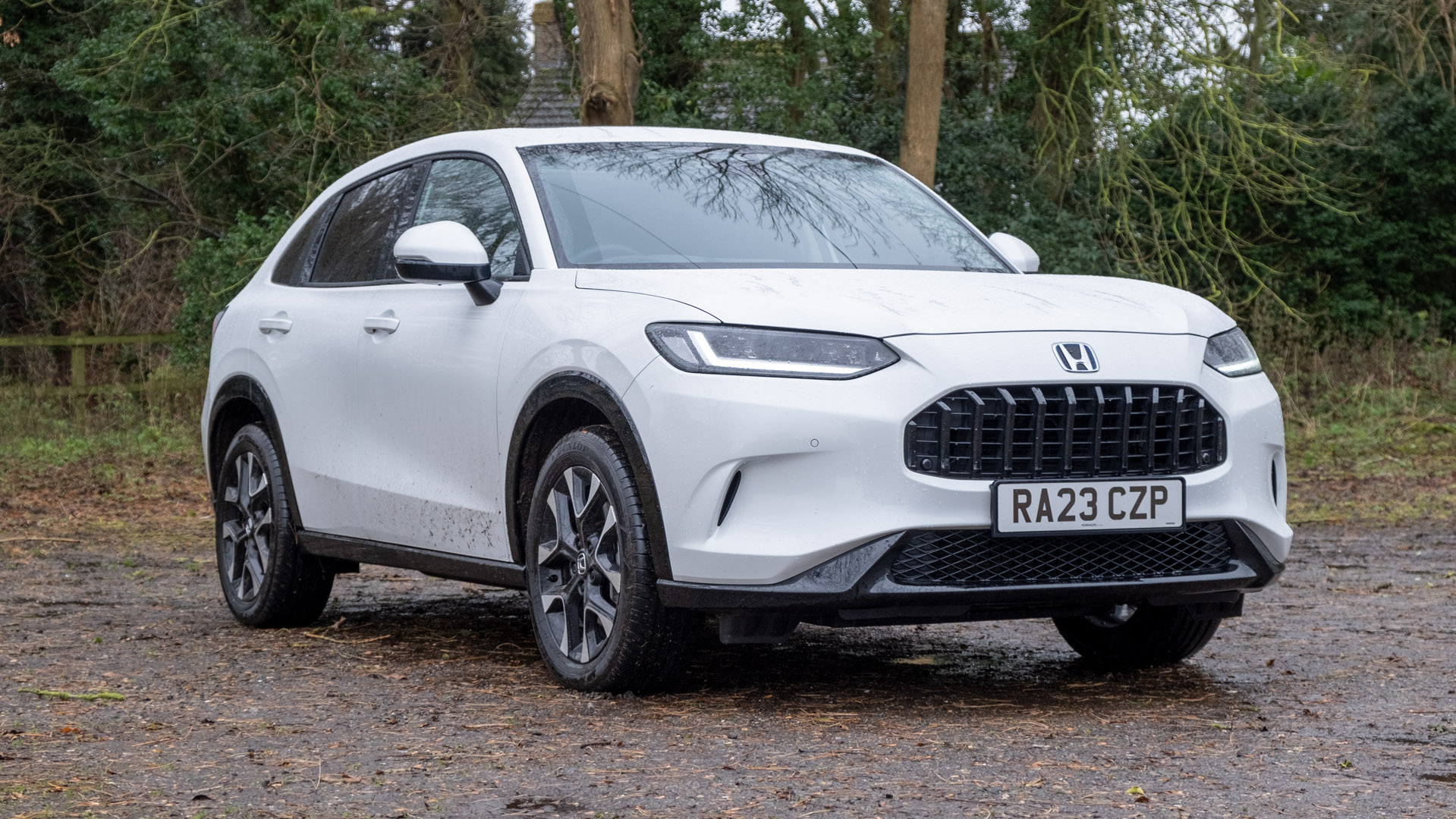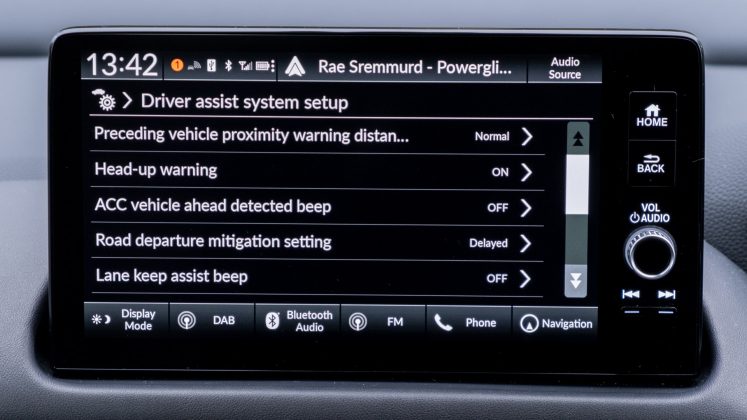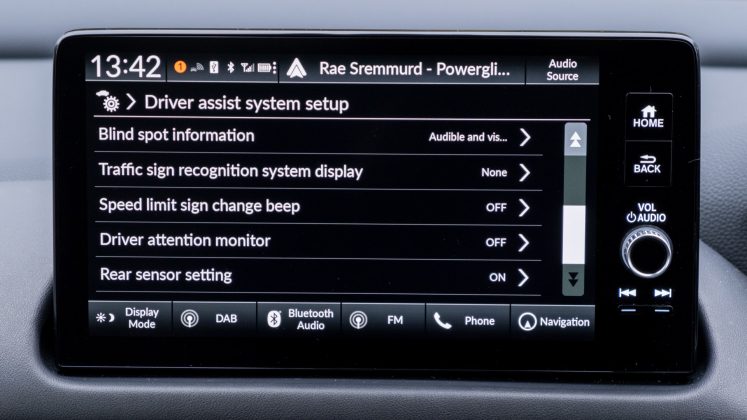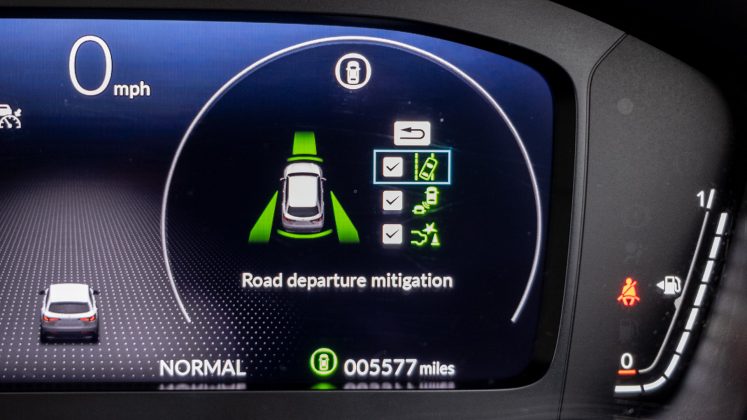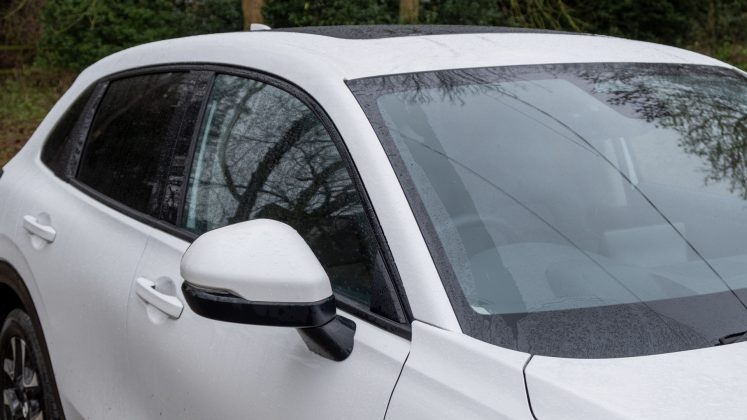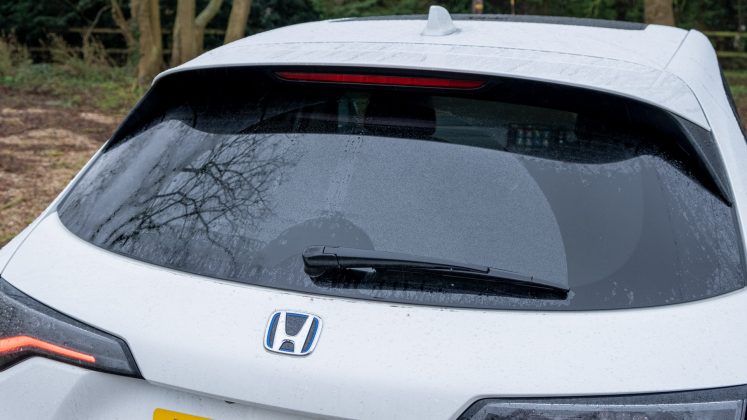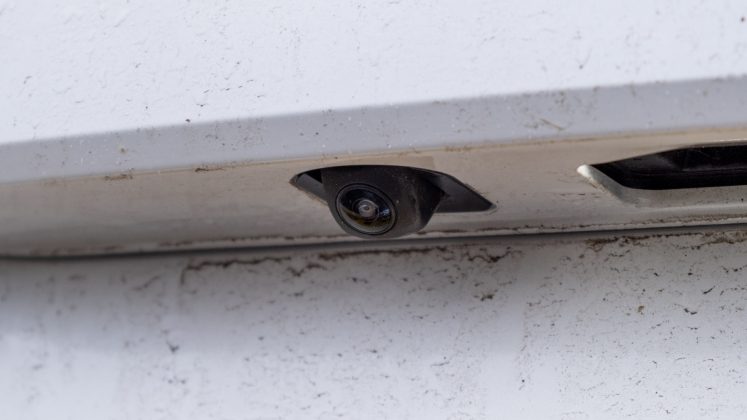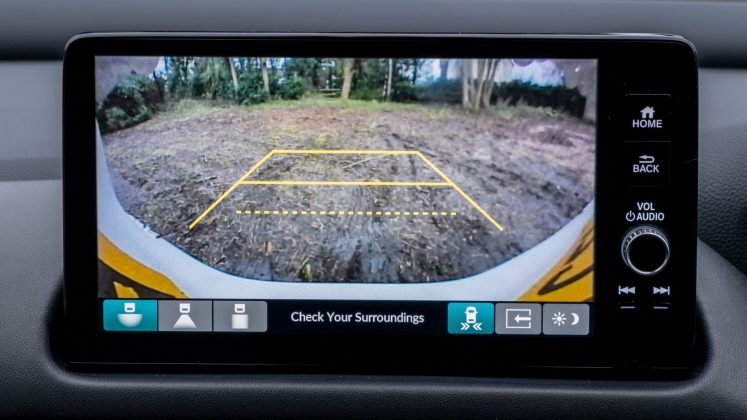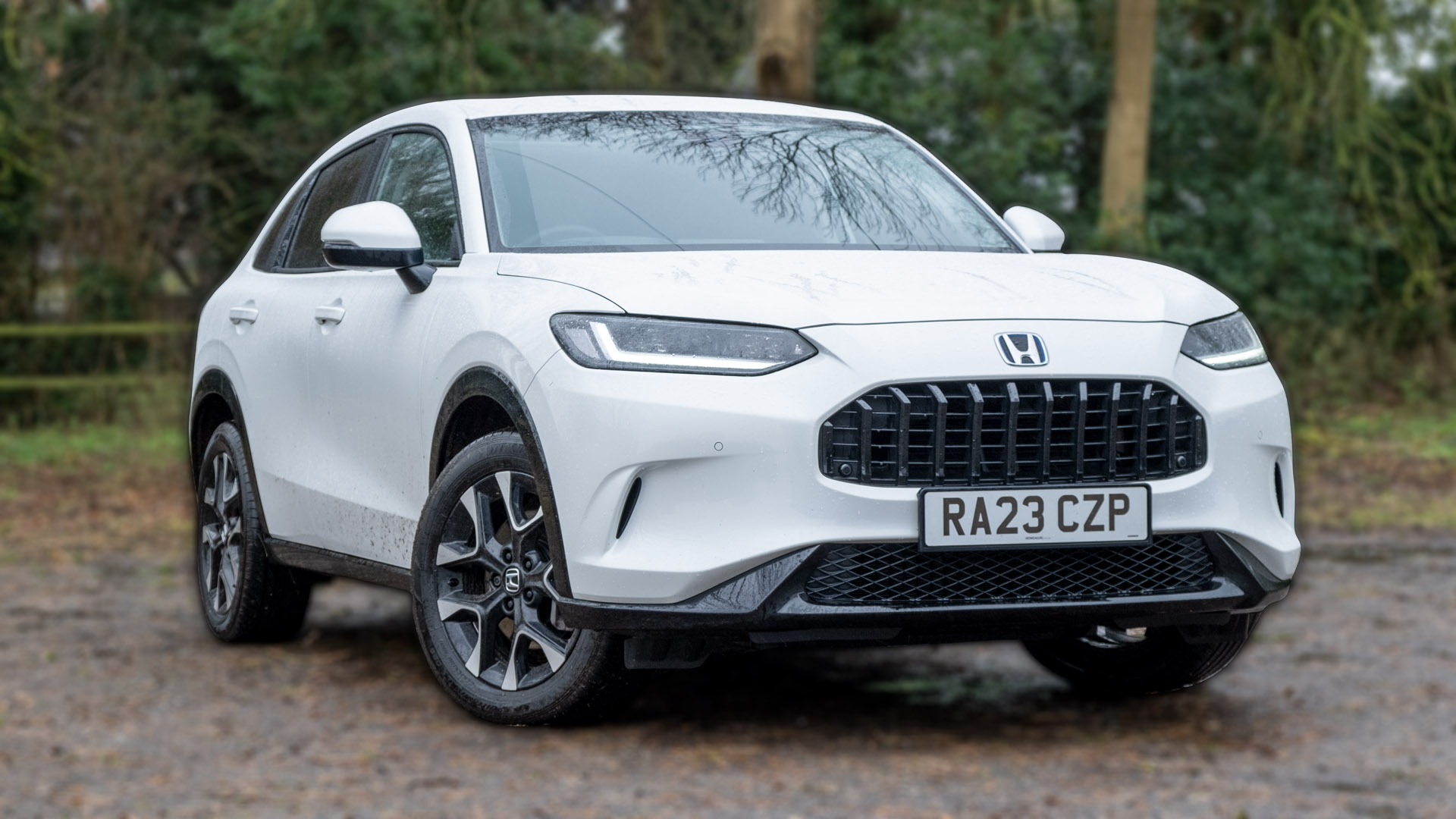The Honda ZR-V is a cross between the larger CR-V and the smaller HR-V in both its asking price and size. Much like its siblings, the new ZR-V also utilises Honda’s e:HEV platform; an intriguing hybrid powertrain, which self-charges and doesn’t require you to plug-in to reap in the benefits of bettered efficiency. At least, that’s what the Japanese automaker claims in its marketing of the SUV.
If you’d prefer to watch a review of the Honda ZR-V, head on over to our YouTube channel.
Honda ZR-V price & competition
At the time of writing and in the UK, the ZR-V is available in three trims: Elegance (£39,495), Sport (£41,095) and Advance (£42,895) – a detailed breakdown of the differences can be found below (click to expand):
Indeed, its asking price sits in-between the Honda HR-V, which starts from £29,410, and the CR-V from £45,895; the CR-V is also available as a plug-in hybrid (e:PHEV) from £53,995.
Find the best Honda ZR-V deals
Aside from Honda’s fleet, there are quite a few hybrid SUVs to consider: the Nissan Juke Hybrid from £27,250; MG HS PHEV from £31,095; Nissan Qashqai e-Power from £34,020; Peugeot 3008 Hybrid from £34,180; Citroen C5 Aircross from £36,875; Nissan X-Trail e-Power from £36,965; Citroen C5 X Hybrid from £38,220; Cupra Formentor e-Hybrid from £39,895; Peugeot 408 Hybrid from £40,450; Kia Sportage PHEV from £40,545; Ford Kuga PHEV from £40,555; Hyundai Tucson PHEV from £41,930; Range Rover Evoque P300e PHEV £49,000; Suzuki Across Hybrid from £49,529; Audi Q5 TFSIe from £55,105; and the BMW X3 xDrive30e from £56,515.
Buy a car phone mount on Amazon (Affiliate)
You might also want to consider pure electric SUVs, such as: the Fiat 600e from £29,995; MG ZS EV from £30,495; Citroen e-C4 from £30,569; Citroen e-C4 X from £31,610; Kia Soul EV from £32,875; Hyundai Kona Electric from £34,995; Jeep Avenger from £35,700; Peugeot e-2008 from £36,500; Kia Niro EV ‘2 64’ from £37,325; Vauxhall Mokka-e from £37,610; Skoda Enyaq iV from £40,585; Volkswagen ID.4 from £42,640; Hyundai Ioniq 5 from £43,445; BMW iX1 from £44,560; Tesla Model Y from £44,990; Kia EV6 from £45,275; and the Audi Q4 40 e-tron from £50,745. You’ve also got the MG5 EV, an all-electric estate that starts from £30,995, and the Smart #1, a crossover that starts from £31,950.
Read next: Hyundai Tucson review: Is the plug-in hybrid worth it?
Honda ZR-V exterior review
From the exterior, the new Honda ZR-V stands out over its siblings, with a distinctive frontal profile. It has a stylish nose and a relatively small grille. From the side, it has a sleek profile with 18” alloys fitted as standard across the range; there are varying styles across the trims, with 19” alloys available as an option, with prices ranging from £1,460 up to a whopping £3,100. As for the rear, it has a snazzy look, which is in part thanks to the accentuated taillights and tailgate design.
For your colour options, it comes as standard in black, but is available in white or blue pearl, or a red metallic finish for an additional £650. The premium Diamond Dust Pearl white finish will set you back £975 instead.
Elsewhere, the ZR-V’s roof capacity is rated at 65kg while towing sits at 700kg for unbraked trailers and 750kg for braked trailers. The latter is a little disappointing when compared to some of its rivals, let alone the CR-V e:PHEV that is even more capable.
Read next: Cupra Formentor e-Hybrid review: Better than BMW X2?
Honda ZR-V interior review
Inside the cabin, the ZR-V isn’t too dissimilar to its siblings in both its design and the inclusion of physical buttons. Indeed, unlike many of its competitors, the ZR-V still has a practical design, with buttons located on the steering wheel, centre console and dashboard; there are dedicated climate controls, which make it a breeze to adjust the fan speed or temperature of the cabin while on the move.
In terms of the material chosen within the cabin, Honda provides a black fabric material in the Elegance trim, a part leather and fabric design in the Sport and the pictured full leather in the Advance spec. The overall look and feel won’t compete with more premium alternatives but it doesn’t feel cheap.
Read next: Our favourite power banks for long journeys
What’s surprising, however, is that the Japanese automaker has opted for a part-digital 7” instrument cluster in the Elegance and Sport trims. The driver’s display moves up to a fully digitalised 10.2” display in the Advance trim, which you’ll see pictured. No matter its size, it’s great to see that turn-based navigation data from the built-in sat-nav and third-party operating systems are fed through to the instrument cluster. Indeed, Android Auto and Apple CarPlay are both supported with the latter also working over a wireless connection.
The 9″ centre-weighted display provides a means of displaying your route, with the interface itself being very responsive and intuitively laid out. The addition of physical buttons next to the display also makes it easy to adjust settings on the fly. Furthermore, it’s nice to see a Head-Up Display (HUD) included as standard in the Advance trim – it’s not available as an option in the other trim levels.
Speaking of which, the top-spec model also houses a punchy 12-speaker Bose audio system, with it being downgraded to an eight-speaker setup in the Elegance and Sport trims. If you’d like to hear how the former system performs, watch our detailed review on YouTube.
Honda ZR-V storage review
For you to attain the utmost audio quality from your smartphone, we’d always recommend plugging into the infotainment system and here you’ll find a USB Type-A port by the centre console. The Type-C port, which is conveniently located towards the passenger side, provides charge only. In the Sport and Advance trims, there are two USB Type-C ports located at the rear of the centre console. In these trims, you’ll also find a wireless smartphone charger towards the front of the centre console. This resides next to a 12V socket, which can be handy if you use a dash cam.
As for storage at the front of the cabin, there’s a sunglass holder towards the headliner, a sizeable glove box, and by the centre console, you’ll find two cupholders and a small compartment under the armrest. There are also the door bins, which will accommodate a 500ml bottle and a few valuables. It’s a shame, however, that the door bins are not lined in any fabric, which means loose change or keys will be heard rattling around when traversing uneven terrain.
The same could be said at the rear, with the door bins also being a bit more limited. Finally, there’s a pulldown armrest at the back, which reveals two cupholders.
Buy a car phone mount on Amazon (Affiliate)
When it comes to its boot, there’s roughly 370 litres with the seats in place and 1,301 litres with them propped down; it should suffice for your weekly shops but won’t compete with some of its electric-powered rivals.
To put the ZR-V’s figures into perspective here’s a selection of other SUVs: Land Rover Discovery Sport P300e (1,179/1,794 litres); Tesla Model Y (854/2,100 litres); Honda CR-V e:PHEV (635/1,728 litres); Skoda Enyaq iV (585/1,710 litres); Honda CR-V e:HEV (586/1,642 litres); VW Passat Estate GTE (483/1,613 litres); VW ID.4 (543/1,575 litres); Hyundai Ioniq 5 (520/1,587 litres); Skoda Octavia iV Estate (490/1,555 litres); Citroen C5 X Hybrid (485/1,580 litres); Peugeot 408 Hybrid (485/1,545 litres); Citroen C5 Aircross (460/1,510 litres); Nissan X-Trail (485-575/1,298-1,386); Kia EV6 (490/1,300 litres); MG ZS EV (448/1,375 litres); Peugeot e-2008 (434/1,467 litres); Range Rover Evoque P300e (591/1,383 litres); Nissan Qashqai e-Power (455/1,379 litres); Kia Soul EV (315/1,339 litres); Cupra Formentor e-Hybrid (345/1,475 litres); Suzuki Across Hybrid (490/1,168 litres); Citroen e-C4 (380/1,250 litres); BMW X2 xDrive 25e (410/1,290 litres); Nissan Juke Hybrid (354/1,237 litres); Honda HR-V (320/1,290 litres); Hyundai Kona Electric (332/1,114 litres); Vauxhall Mokka-e (310/1,060 litres). As for the MG5 EV estate, it offers 479 and 1,367 litres, respectively.
In terms of practicality, there’s a small underfloor compartment, 60:40 split-folding rear seats, a flat loading bay and a wide-opening tailgate with a hatchback design. The tailgate is manually-operated on the Elegance trim but is fully electric on the others.
Read next: Skoda Enyaq iV review: The Volkswagen ID.4 alternative
Honda ZR-V comfort review
As you might have noted, the ZR-V doesn’t have Honda’s Magic Seats. A novel feature that’s present in the HR-V and the Jazz, which allows you to fold up the second row and have a secondary storage area.
On the other hand, the ZR-V has more space for your rear occupants. Both headroom and legroom have been optimised, with the rear footwell also having a near-flat design. As such, 6-foot 4-inches (193cm) individuals can be seated without any discomfort, however, headroom for the rear middle occupant is a bit more limited.
The front of the cabin is similarly excellent, with the seats being comfortable and accommodating. The front two have got six-way manual controls in the Elegance trim but move up to eight-way electronic controls in the Sport and Advance. The passenger seat has six-way manual controls and four-way electronic controls, respectively.
Heated front seats are standard across the entire trim range, while the steering wheel and rear outer seats are also capable of getting warm in the Advance trim. You’ll also find a panoramic glass roof in the top-spec model.
As for cabin noise, the ZR-V has decent insulation, but you will still be able to hear wind noise deflecting off the A-pillars and tyre noise creeping into the cabin when rolling on the motorway.
Read next: Citroen C5 X review: Hybrid perfection?
Honda ZR-V performance review
What’s more apparent is the 2-litre four-cylinder petrol engine that can be heard at the front of the cabin. It’s notably loud when you’re overtaking someone with a kick-down or if you’re quite rash on the accelerator pedal.
Speaking of which, the ZR-V uses the i-MMD (Intelligent Multi Mode Drive) hybrid system to deliver its power to the front wheels. Combined with its two electric motors, there’s 135 kW of power (181.5 hp) and 315 Nm of torque. We had it tested using Racelogic’s Performance Box Touch from 0-20mph in 1.93 seconds, 0-30mph in 2.92 seconds, 0-60 mph in 7.22 seconds, 50-70 mph in 4.06 seconds and recorded a peak acceleration of 0.49g. Top speed is limited to 107.5mph.
While raw performance might be of interest to some individuals, what will be of greater importance is efficiency. Here, the ZR-V’s four-cylinder two-litre i-MMD petrol engine is used to both power the vehicle’s front-wheel drive system and charge the small 1.05 kWh battery pack. When there’s enough energy stored up, one can also drive in pure electric mode, thus disengaging the engine. When maximum power is required, both the engine and battery pack work in tandem.
Find the best Honda ZR-V deals
The Electronic Control Unit (ECU) automatically and intelligently chooses which mode the ZR-V should be operating in: engine-only (while charging the battery pack), engine and battery pack, or battery-only.
The transition takes place seamlessly and occurs a multitude of times on a regular drive; looking down at the instrument cluster one can see the ECU relentlessly altering the vehicle’s power delivery to maximise fuel efficiency. While the behaviour can’t be customised, it does a stellar job of charging the battery while on the motorway, and opts for pure EV power when pottering around town.
Note, when in the Normal or Eco driving modes, the vehicle opts for one of the three methods of power delivery, wherein the latter it’ll try to use as much electric drive as possible. In Sport mode, however, the two-litre engine is permanently engaged.
All this wizardry is certainly riveting and undoubtedly attempts to better fuel economy, however, we still only managed to attain 40-45 MPG in our mixed driving tests; close to the manufacturer’s claims but not as impressive as some of its rivals, including Honda’s other models: the Citroen C5 X Hybrid and Peugeot 408 Hybrid attained 70-75 MPG, the Cupra Formentor e-Hybrid attained 64 MPG, the VW Passat Estate GTE 60-65 MPG, Kia Sportage PHEV 60-65 MPG, the Citroen C5 Aircross Hybrid 58 MPG, the Suzuki Across Hybrid 55-61 MPG, the Skoda Octavia iV Estate and Honda HR-V 55 MPG, the Honda CR-V e:PHEV 50-55 MPG, the Nissan Qashqai e-Power 50-53 MPG, the Honda CR-V e:HEV 45-50 MPG, the MG HS PHEV 40-45 MPG, the Hyundai Tucson PHEV 42.7 MPG, the Nissan X-Trail 42.6 MPG, the Range Rover Evoque P300e 40 MPG, the BMW X2 xDrive 25e 39 MPG, the Nissan Juke Hybrid 35-40 MPG, the Jeep Renegade 4xe attained 36 MPG and the Land Rover Discovery Sport P300e a measly 35 MPG.
Compared to its rivals, the Honda ZR-V e:HEV isn’t too shabby but nor is it in a league of its own; while it doesn’t have to be plugged in like a PHEV to better its fuel efficiency, we still had hopes of attaining superior results. As for total driving range, we noted that on a full tank of petrol, we could attain roughly 425 miles from its 57-litre fuel tank, however, Honda claims one can travel 621 miles without having to stop to refuel – we’re not sure how the manufacturer attained such numbers.
On the subject of efficiency, the Honda ZR-V can recoup energy back into the battery pack via regenerative braking. There’s a degree of customisation via the use of the flappy paddles found behind the steering wheel – it’s not strong enough to drive with one pedal only but is nonetheless harsher than a lot of its electrified rivals.
Furthermore, in Normal and Eco modes, the regen levels reset each time you put your foot on the accelerator pedal. There’s no means of saving your last-used mode or for the vehicle to permanently adapt its driving style, which in our opinion is a missed opportunity. According to Honda, “this is to enable more efficient coasting which maximises mpg”. However, “in Sport mode, the regen mode doesn’t reset. So, if you set it to maximum, it will stay there. This is to maximise the energy recovery to ensure the batteries have as much charge as possible, for a sportier drive.”
The fact that the flappy paddles are used to adjust the regenerative braking level and that there’s no manumatic operation should indicate that the gearbox is fully automated, and indeed the new ZR-V is marketed with a Continuously Variable Transmission (e-CVT) – it gives you the sensation of “shifting through the gears” but is a single-speed gearbox; there are even fake gear shift noises that can be heard via the speaker system, with the noises ramping up in Sport mode. Despite the manufacturer’s label of having a CVT gearbox, there’s none present.
Indeed, the engine itself ramps up when power is required or will stay at a higher RPM in Sport mode for a bettered throttle response. According to Honda: “the clutch system can engage to provide a single-speed direct drive from the ICE when required at higher speeds”.
Despite the lack of customisation, the new ZR-V is extremely responsive to input in both inner-city commutes and spirited country road drives. Surprisingly, the SUV’s handling characteristics are also impressive. There’s minimal body roll when driving at speed around corners but yet, going over potholes and speed bumps within the city, the drive isn’t uncomfortable.
Granted, its suspension system won’t compete with the floaty Citroen C5 Aircross Hybrid and Citroen C5 X Hybrid nor provide the driver’s feel of the BMW X2 xDrive 25e and Cupra Formentor e-Hybrid, but the ZR-V still provides a good blend between the two.
Read next: BMW X2 xDrive25e review: A sporty hybrid crossover
Honda ZR-V safety review
When it comes to safety, the new Honda ZR-V scored 4/5 stars in Euro NCAP’s rigorous crash tests; it managed 79% in Adult Occupancy, 86% in Child Occupancy, and 68% in the Safety Assist tests.
As for the driver assistance systems, the vehicle has a plethora of them fitted as standard: Brake Assist, Collision Mitigation Braking System, Collision Mitigation Throttle Control (RR and FR), Forward Collision Warning, Intelligent and Adjustable Speed Limiter, Lane Departure Warning, Lane Keeping Assist System, Low-Speed Braking System, Low-Speed Following, Road Departure Mitigation, Traffic Jam Assist, Traffic Sign Recognition System, High Beam Support System (HSS) and Adaptive Cruise Control.
It’s great to see all these systems included as standard, and further that the Adaptive Cruise Control correctly judges the space between you and the leading vehicle, while not being jittery. Better still, the Lane Keeping Assist System gives you steering support on the motorway, which makes those longer drives less mundane.
With that said, it’s rather frustrating that all these systems are enabled each time you power on the vehicle. Due to recent legislation changes in Europe and the UK, the likes of the Traffic Sign Recognition System will beep at you each time you exceed the speed limit. Not that we’re suggesting you break the law, but rather in our tests we found the vehicle often misinterpreting road signs, and therefore leading to an infuriating experience namely on the country roads. Further, Honda hasn’t made it simple to disable, as you’ll have to put it in Park and faff around with the infotainment system; an oversight, at least in our opinion, by the Japanese automaker.
When it comes to visibility, the front and side windows are large however at the rear it’s a bit more limited. Thankfully, you have a rear wiper, a reversing camera, and front and rear parking sensors that come fitted as standard. The resolution of the camera is a little low and there’s no washer jet, but it’s still a handy inclusion. As for manoeuvrability, it’s a non-issue with the vehicle’s turning circle rated at 11.3 metres.
Read next: New Honda HR-V review: Best hybrid SUV?
TotallyEV’s verdict on the new Honda ZR-V
Overall, the Honda ZR-V is pretty competent across the board: it’s engaging and comfortable to drive, is loaded with tech within the cabin, has plenty of driver assistance systems, a practical interior design and good space for your rear occupants.
Find the best Honda ZR-V deals
However, it lacks the boot capacity when pitted against its rivals, isn’t overly efficient, doesn’t have a unique selling point like the HR-V and CR-V and more importantly is quite expensive. As such, we’d recommend looking at some of the alternatives instead, be it full hybrid, plug-in hybrid or fully electric SUVs.
What do you make of the Honda ZR-V? Let us know in the comments section below or via social media; we’re on: YouTube, Instagram, Facebook, X and LinkedIn.

